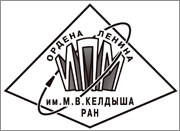|
Quasi-independent particles model for heterogeneous plasma microfield
A. A. Belov, N. N. Kalitkin
Abstract:
Optical properties of plasmas are determined by presence of fluctuating microscopic electric field. The present work provides thorough analysis of contemporary models and points out their shortcomings. To overcome the latter, we take the QUIP (QUasi-Independent Particles) model derived ab initio. We provide generalization of the model allowing to account for microfield heterogeneity up to octupole term. We investigate convergence of the multipole series and and show that higher order terms can be neglected. We perform verification of the model via comparison with experiments. We emphasize that the comparison should be made with respect to the number of observed lines because this number strongly depends on the selected model. We outline experiments suitable for such testing. These are the experiments on Ar+Kr radiating plasma heated by laser radiation. In these experiments, the intire Ar$^{+16}$ spectral series is observed. The QUIP model correctly describes the number of observed lines of the series, so its adequateness is justified.
Keywords:
plasma, microfeld, the Stark effect.
Citation:
A. A. Belov, N. N. Kalitkin, “Quasi-independent particles model for heterogeneous plasma microfield”, Keldysh Institute preprints, 2019, 093, 28 pp.
Linking options:
https://www.mathnet.ru/eng/ipmp2731 https://www.mathnet.ru/eng/ipmp/y2019/p93
|

| Statistics & downloads: |
| Abstract page: | 275 | | Full-text PDF : | 70 | | References: | 43 |
|




 Contact us:
Contact us: Terms of Use
Terms of Use
 Registration to the website
Registration to the website Logotypes
Logotypes








 Citation in format
Citation in format 